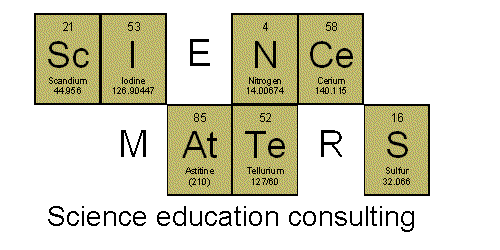Have students fill in a blank
bingo card with any numbers between 1 and 50.
You can make up your own clues involving elements' atomic numbers, protons, electrons, and neutrons, or you can use mine:
1 - # of protons in Hydrogen
2 - # of neutrons in Helium
3 - # of electrons in Lithium
4 - # of neutrons in Lithium
5 - # of protons in Boron
6 - atomic number of carbon
7 - # of neutrons in Nitrogen
8 - # of electrons in Oxygen
9 - atomic mass of Beryllium
10 - # of protons in Neon
11 - atomic number of sodium
12 - atomic mass of Magnesium
13 - # of in Aluminum
14 - # of protons + # of neutrons in Nitrogen
15 - # of protons in Phosphorous
16 - # of protons in Sulfur
17 - # of electrons in Chlorine
18 - # of neutrons in Chlorine
19 - # of protons + # of neutrons in Fluorine
20 - # of neutrons in Potassium
21 - atomic number of Scandium
22 - # of protons in Titanium
23 - # of protons + # of neutrons in Sodium
24 - atomic mass of Magnesium
25 - # of electrons in Manganese
26 - # of neutrons in Titanium
27 - atomic number of Cobalt
28 - # of protons + # of neutrons in Silicon
29 - # of protons in Copper
30 - # of protons in Zinc
31 - # of electrons in Gallium
32 - atomic number of Germanium
33 - atomic number of Arsenic
34 - # of protons in Selenium
35 - # of neutrons in Zinc
36 - # of electrons in Krypton
37 - atomic number of Rubidium
38 - atomic number of Strontium
39 - # of protons in Yttrium
40 - atomic mass of Argon
41 - # of electrons in Niobium
42 - # of neutrons in Arsenic
43 - atomic number of Technetium
44 - # of protons in Ruthenium
45 - atomic mass of Scandium
46 - # of electrons in Palladium
47 - # of electrons in Silver
48 - # of protons + # of neutrons in Titanium
49 - atomic number of Indium
50 - # of protons in Tin
I recommend making up a list ahead of time, to make sure you don't use the same number over and over while completely skipping others.
I wrote my clues on index cards. Then, for each round I shuffle the deck and draw the cards from the top.


























































